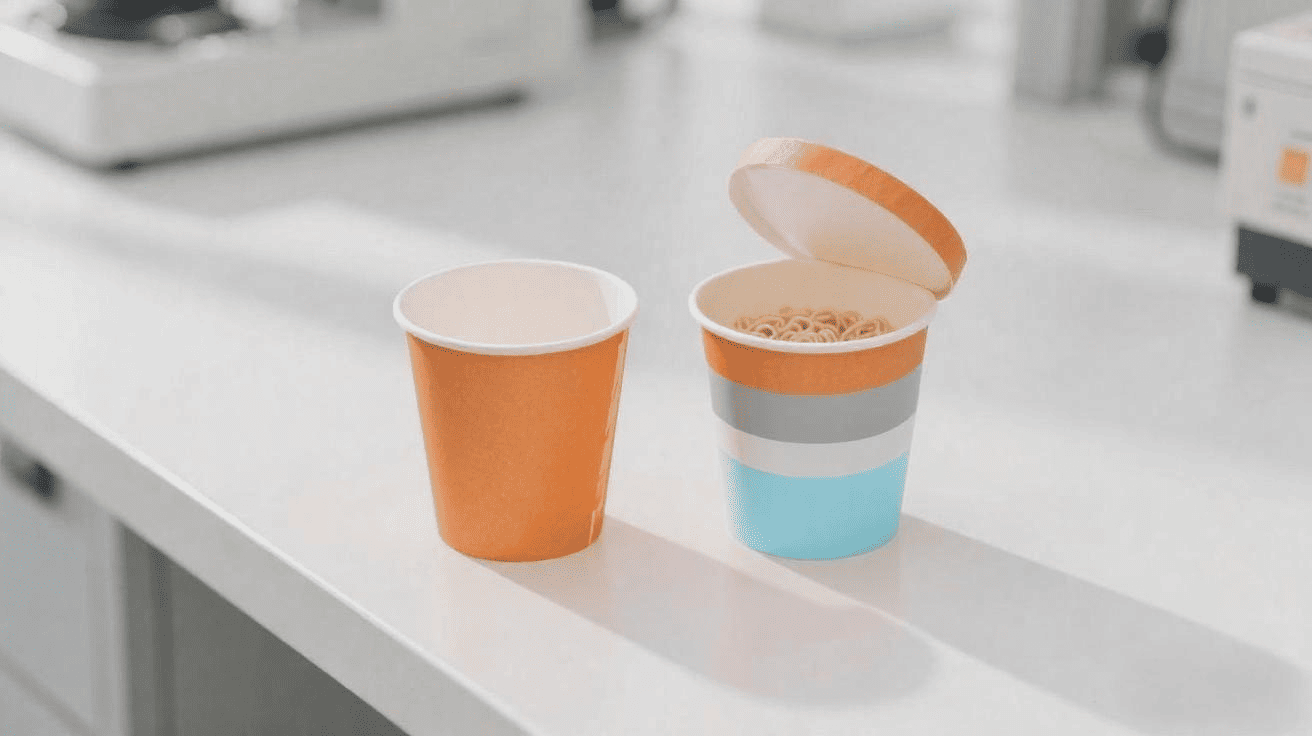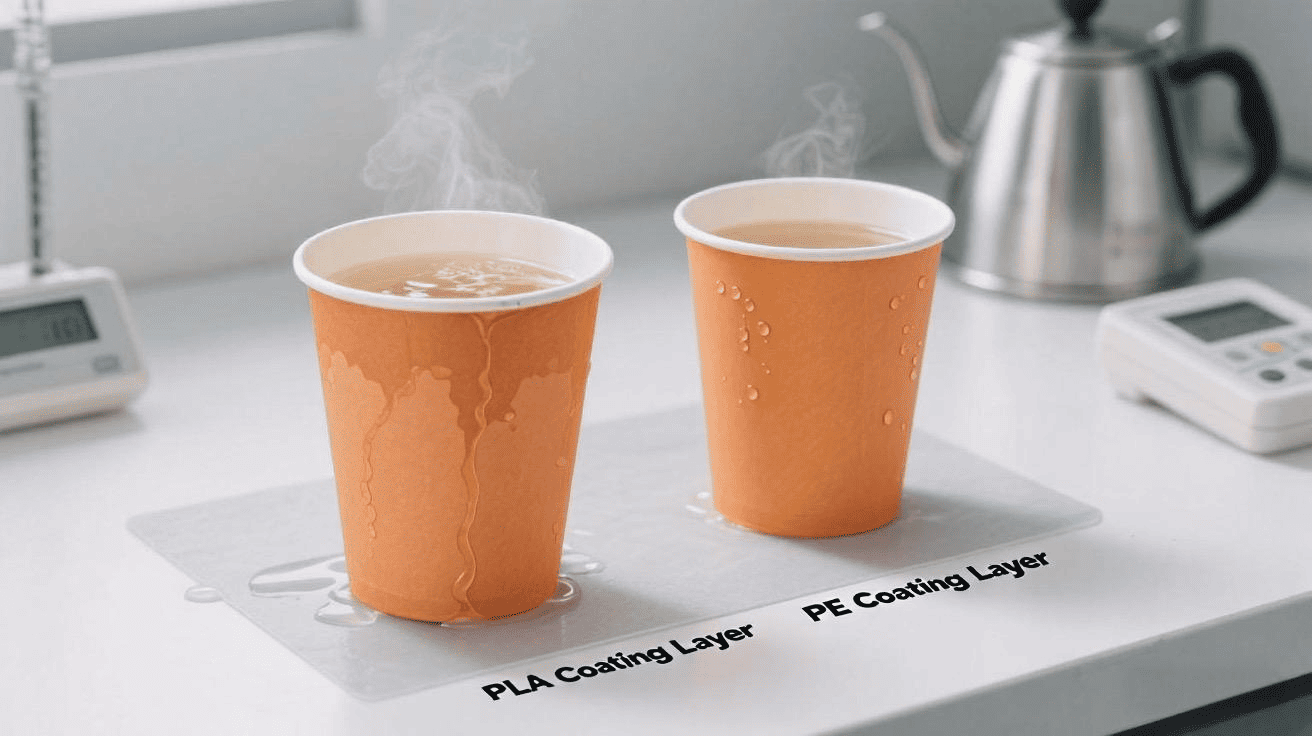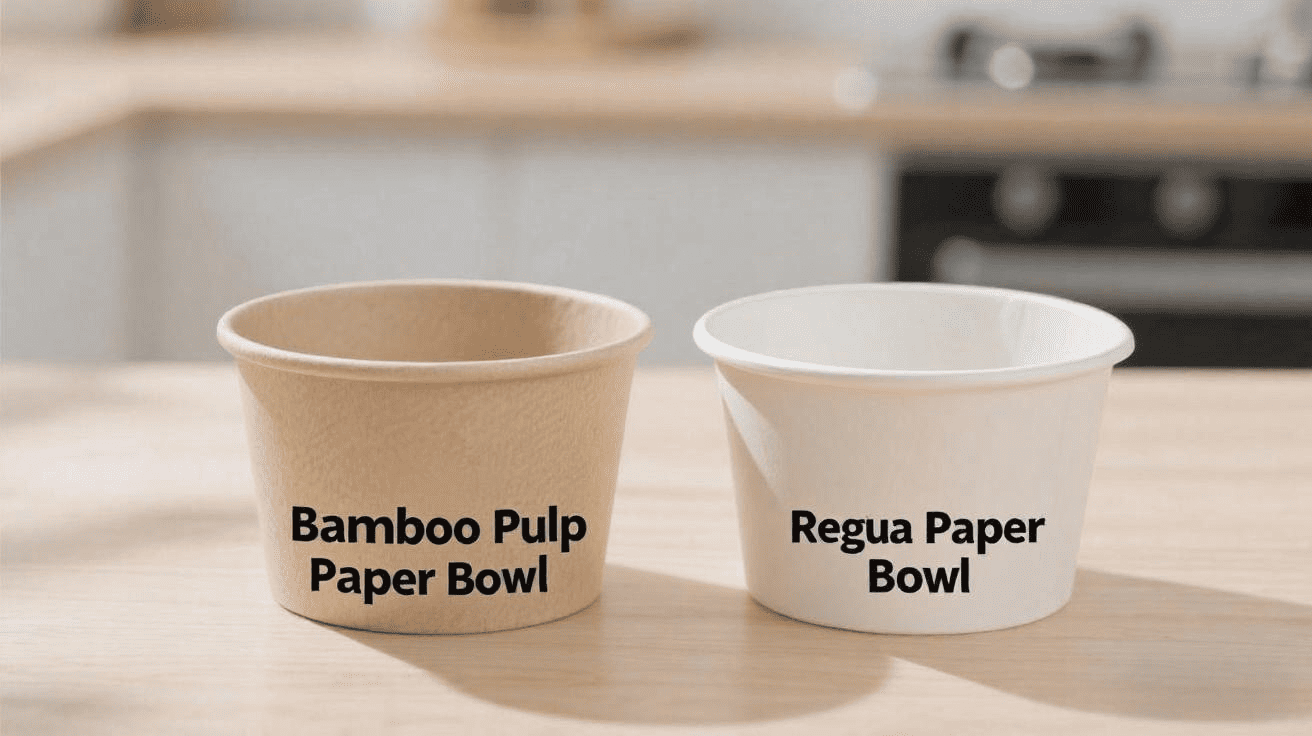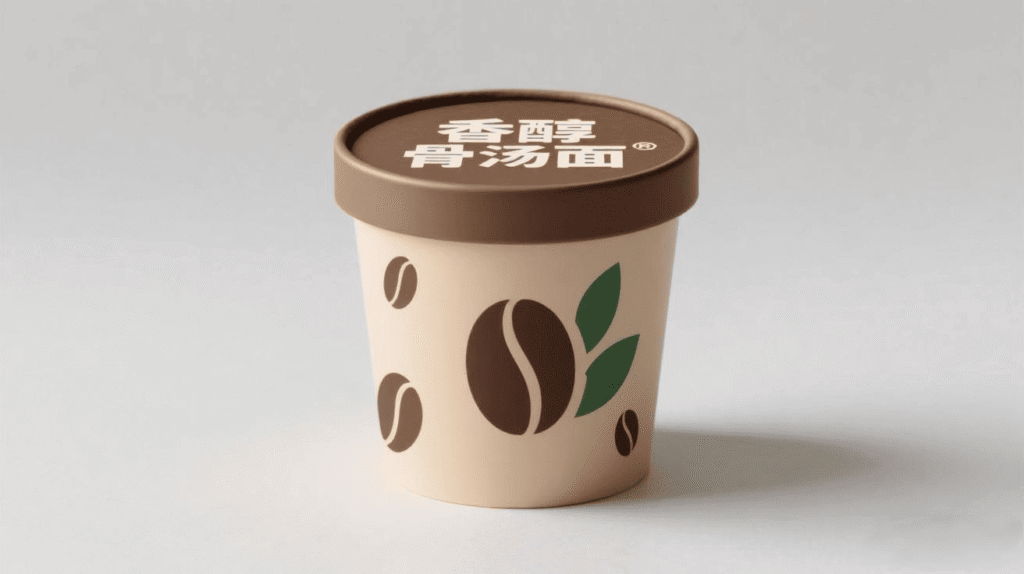In fast-paced life, disposable noodle paper cups bring convenience. Many people do not know their real materials and limits.
Custom noodle paper cups are made from food-grade paper1 with a waterproof coating2. The coating can be PE plastic3 or biodegradable PLA4. This makes them able to hold hot liquids without leaking.
<sup id=](https://papercupshkl.com/wp-content/uploads/2025/08/%E5%9B%BE%E7%89%871-3.png) 5" title="[custom noodle paper cups](https://papercupshkl.com/are-soup-paper-bowls-environmentally-friendly-2/)5" />
I have worked in paper cup manufacturing for over 20 years. Many customers think paper cups are plain paper. This is not true. They are made with strong paperboard and a waterproof layer. The choice of material affects safety, heat resistance6, and care for the environment. I will explain what you need to know.
5" title="[custom noodle paper cups](https://papercupshkl.com/are-soup-paper-bowls-environmentally-friendly-2/)5" />
I have worked in paper cup manufacturing for over 20 years. Many customers think paper cups are plain paper. This is not true. They are made with strong paperboard and a waterproof layer. The choice of material affects safety, heat resistance6, and care for the environment. I will explain what you need to know.
How to make your own cup of noodles?
Busy days make people want quick, simple food. Many ask me how to make instant noodles at home.
Get a food-grade paper1 bowl. Put dry noodles, seasoning, and dried vegetables inside. Pour in 90–95°C hot water. Cover. Wait 3–5 minutes.
<sup id=](https://papercupshkl.com/wp-content/uploads/2025/08/%E5%9B%BE%E7%89%872-3.png) 7" title="DIY [noodle cups](https://www.reddit.com/r/ramen/comments/16npvwn/good_healthy_instant_cup_ramen_reccomendations/)7" />
When I make custom noodle cups7 for clients, I make sure they are safe with hot water. For home use, choose a PE-laminated paper bowl or a bamboo pulp bowl. PLA-coated paper bowls are better for warm soup, not boiling water. Put noodles and seasoning in the bowl. Then pour hot water under 100°C. Cover with a lid. Do not put the cup in the microwave. This keeps the taste and avoids damage. 7" title="DIY [noodle cups](https://www.reddit.com/r/ramen/comments/16npvwn/good_healthy_instant_cup_ramen_reccomendations/)7" />
When I make custom noodle cups7 for clients, I make sure they are safe with hot water. For home use, choose a PE-laminated paper bowl or a bamboo pulp bowl. PLA-coated paper bowls are better for warm soup, not boiling water. Put noodles and seasoning in the bowl. Then pour hot water under 100°C. Cover with a lid. Do not put the cup in the microwave. This keeps the taste and avoids damage. |
Material | Heat Resistance | Good for DIY Noodles |
|---|---|---|---|
| PE-Laminated Paper | 100°C | ✅ | |
| PLA-Coated Paper | 80°C | ❌ | |
| Bamboo Pulp Paper | 120°C | ✅ |
Why do ramen noodle cups7 say "do not microwave"?
Many noodle cups7 carry a warning. Customers ask why.
Many noodle cups7 have PE coating or foam layers. These can melt in a microwave and give off harmful substances. Some lids have aluminum which can spark.
 This warning is not only legal. It is real risk. PE coating can soften in the microwave and release chemicals. Foam insulation can change shape and break down. Some covers have a thin metal film. This can spark in the microwave. We always tell our food customers to pour noodles into a glass or ceramic bowl before heating. This avoids harm and keeps flavor.
This warning is not only legal. It is real risk. PE coating can soften in the microwave and release chemicals. Foam insulation can change shape and break down. Some covers have a thin metal film. This can spark in the microwave. We always tell our food customers to pour noodles into a glass or ceramic bowl before heating. This avoids harm and keeps flavor. |
Problem | Cause | Risk |
|---|---|---|---|
| Coating Melting | PE film softens above 110°C | Chemicals leak into food | |
| Foam Layer | Polystyrene warps from heat | Harmful fumes | |
| Metal Film on Lid | Metal reacts in microwave | Sparks and fire risk |
What is used to make paper cups waterproof?
Some still ask how paper cups can hold soup without leaking. The reason is the coating.
A thin PE or PLA layer covers the paper. This blocks liquids from soaking into the paper fibers.
 In my factory, we use food-grade paper1board. We add PE, made from oil, or PLA, made from plants. PE is more heat-proof and low-cost but harder to recycle. PLA breaks down in compost plants but is not good for boiling water use. The coating weight8 is usually 15–20 grams per square meter. This stops leaks without making the cup too hard. For oily foods, we use two layers. Oil can pass faster than water.
In my factory, we use food-grade paper1board. We add PE, made from oil, or PLA, made from plants. PE is more heat-proof and low-cost but harder to recycle. PLA breaks down in compost plants but is not good for boiling water use. The coating weight8 is usually 15–20 grams per square meter. This stops leaks without making the cup too hard. For oily foods, we use two layers. Oil can pass faster than water. |
Coating Type | Source | Heat Tolerance | Environmental Impact |
|---|---|---|---|---|
| PE | Oil-based | ~110°C | Not biodegradable | |
| PLA | Plant-based | ~80°C | Compostable in plant |
Can paper cups handle boiling water?
Many buyers ask this. Restaurants and noodle brands ask it a lot.
PE-coated bowls can hold 100°C water for a short time. Bamboo pulp bowls can take up to 120°C. PLA-coated cups are not good for boiling water.
 When we make cups for noodle9 shops, we do boiling water tests. PE bowls pass but get soft if the water stays too long. PLA bowls change shape faster. Bamboo pulp bowls do the best job. They take boiling water and even steaming. They cost more. If you want the strongest cup, choose bamboo pulp. For bulk soup takeaway, PE bowls give a good mix of strength and price.
When we make cups for noodle9 shops, we do boiling water tests. PE bowls pass but get soft if the water stays too long. PLA bowls change shape faster. Bamboo pulp bowls do the best job. They take boiling water and even steaming. They cost more. If you want the strongest cup, choose bamboo pulp. For bulk soup takeaway, PE bowls give a good mix of strength and price. |
Material | Max Temperature | Good with Boiling Water |
|---|---|---|---|
| PE-Laminated | ~100°C | Yes, for short time | |
| PLA-Coated | ~80°C | No | |
| Bamboo Pulp | ~120°C | Yes |
Conclusion
Paper cups are not only paper. Their coatings and materials decide safety, use, and environmental effect. Pick the right one for what you serve and how it is used.
Learn about food-grade paper and its significance in food safety and packaging. ↩
Discover the technology behind waterproof coatings and their role in food containers. ↩
Understand the properties of PE plastic and its implications for sustainability. ↩
Find out how biodegradable PLA is revolutionizing eco-friendly packaging solutions. ↩
Explore the materials and benefits of custom noodle paper cups for your food service needs. ↩
Explore the importance of heat resistance in paper cups for safe food consumption. ↩
Discover which noodle cups are safest for hot liquids and why certain materials perform better, helping you choose the right option for health and durability. ↩
Learn how coating weight affects the performance and durability of paper cups. ↩
Learn which cup materials are safest, most heat-resistant, and eco-friendly when serving hot noodles to ensure quality and customer safety. ↩
